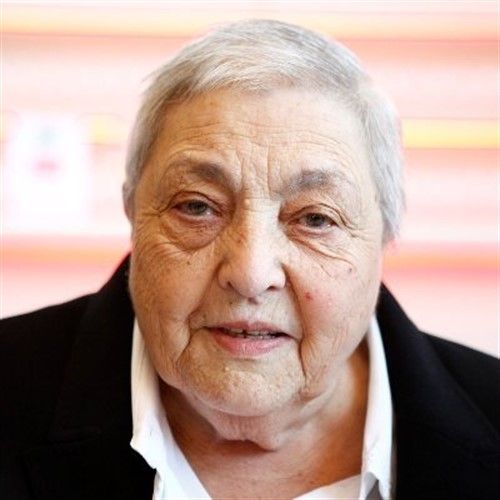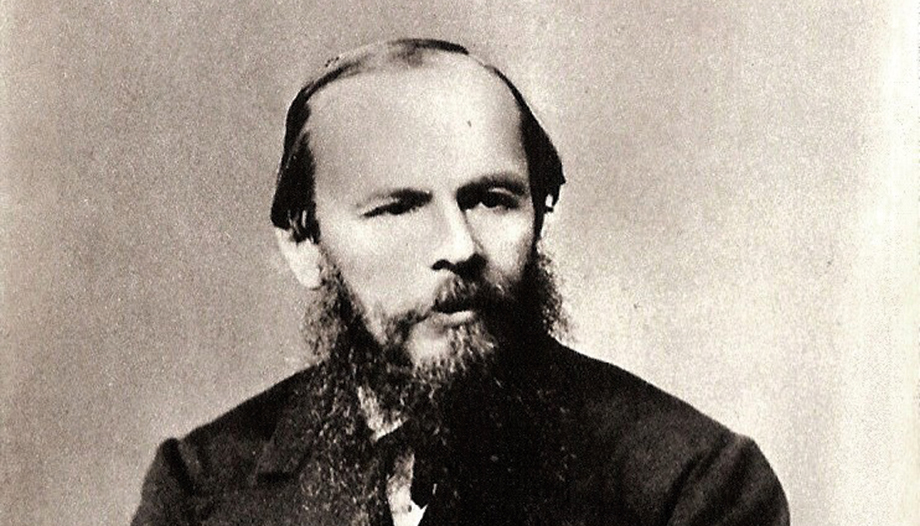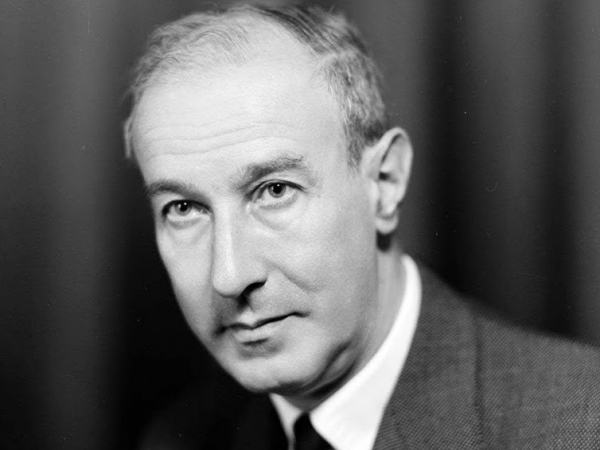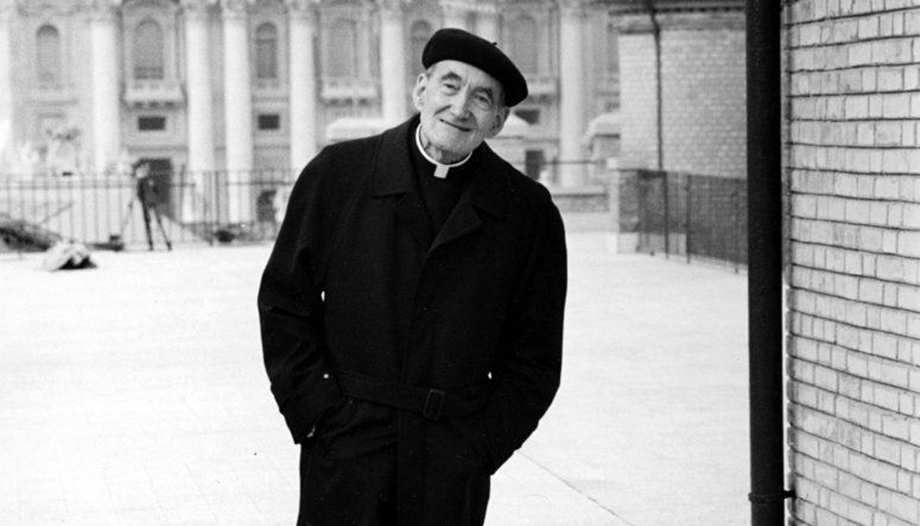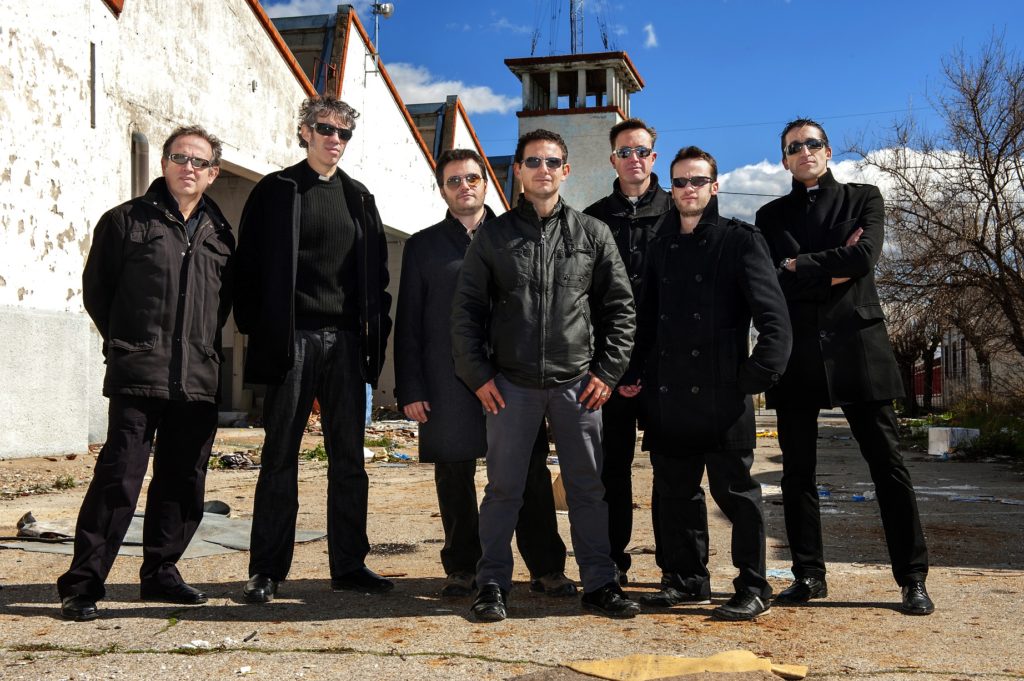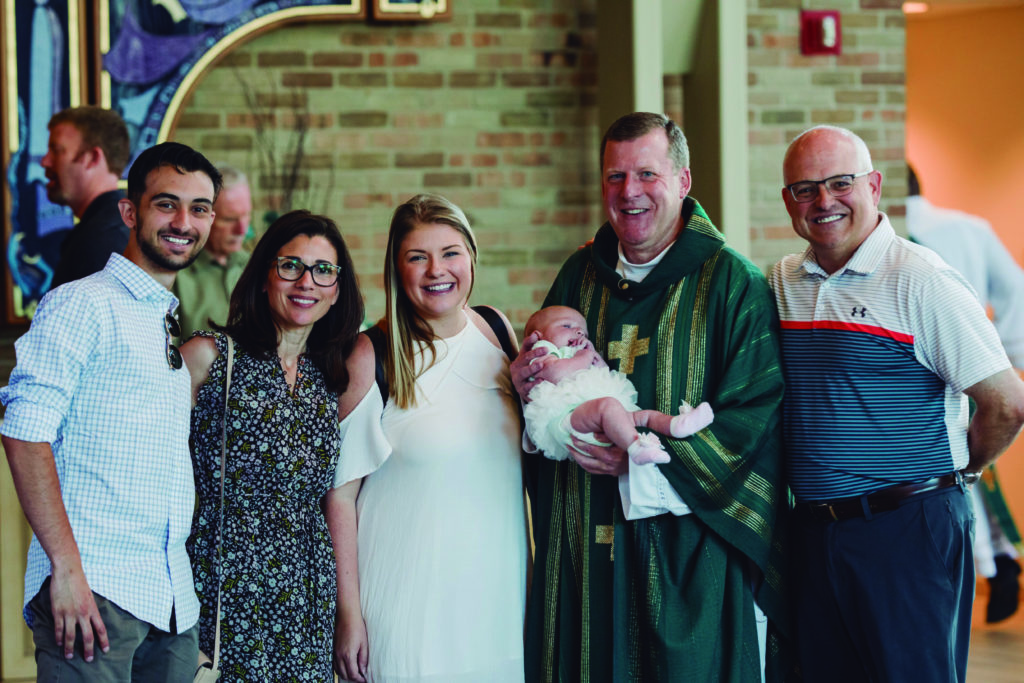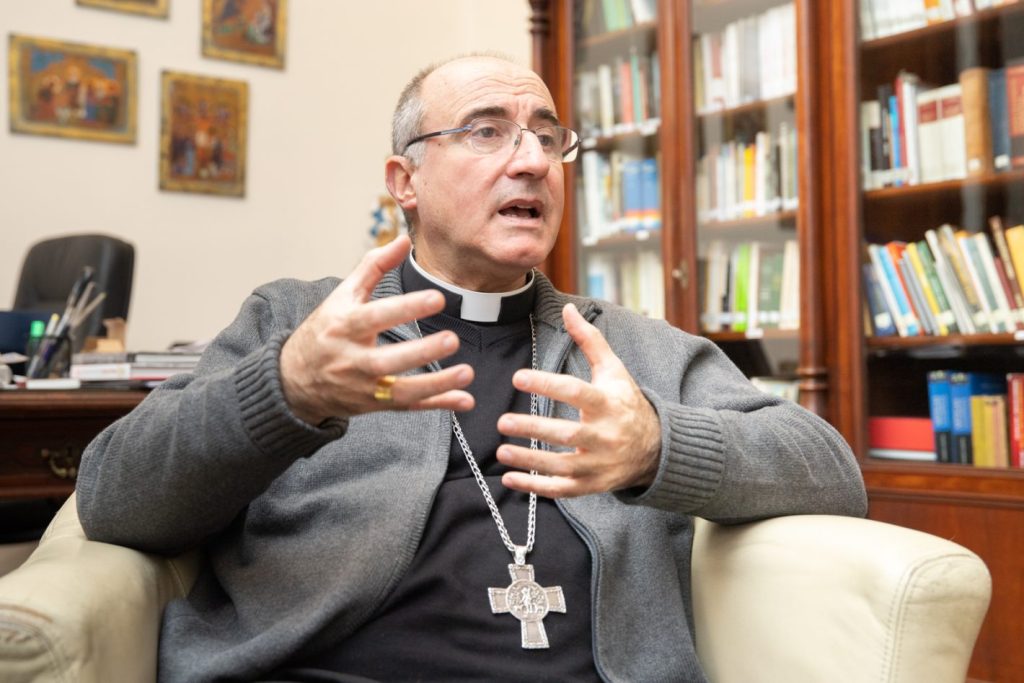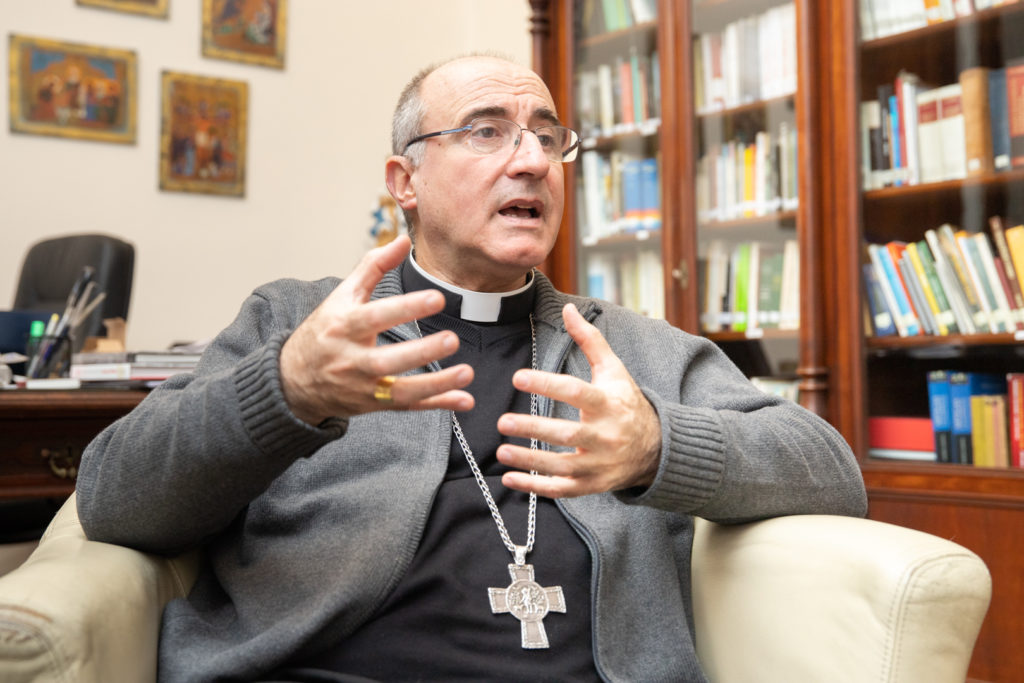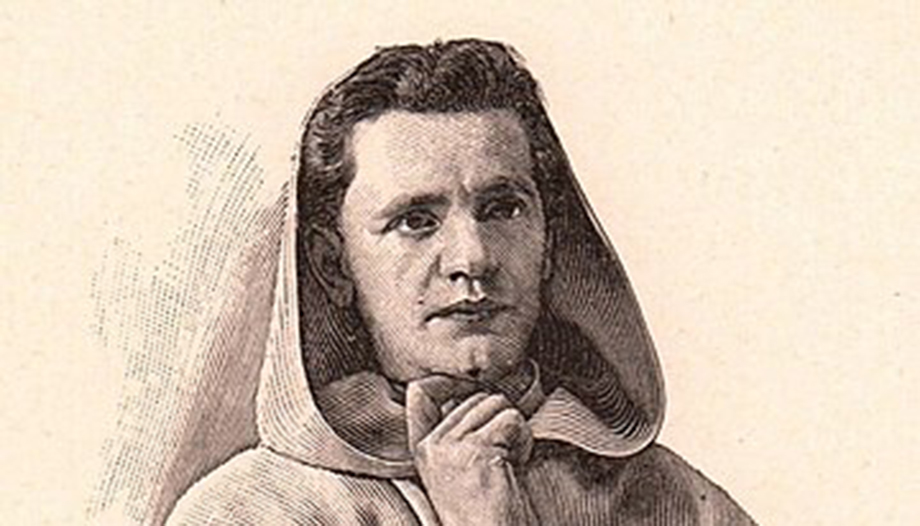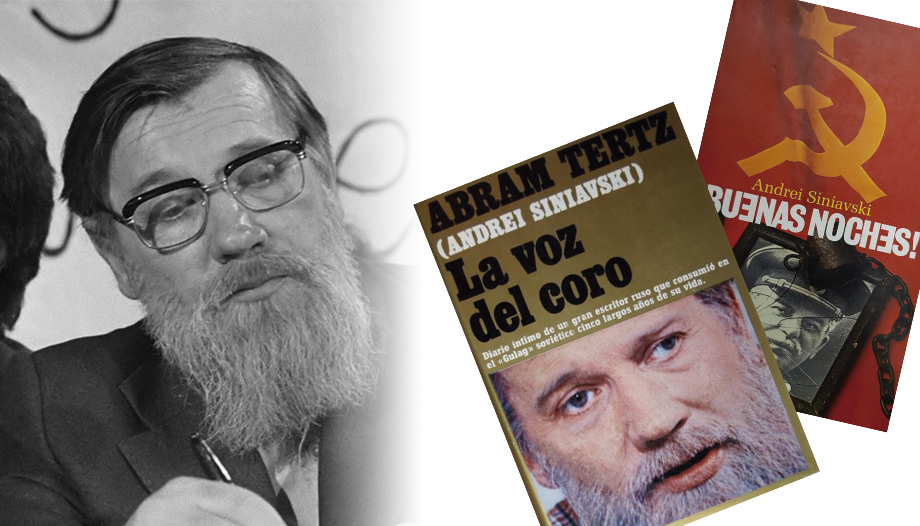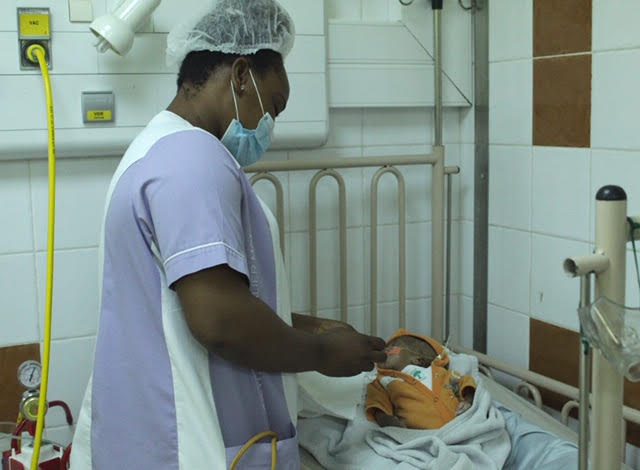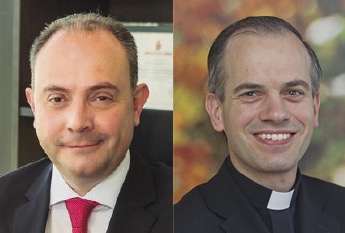The Uruguayan Episcopal Conference was organizing the V National Eucharistic Congress, which was to be held in October. Palabra had thought of interviewing Cardinal Daniel Sturla on this occasion. The doubt was whether with the delay to 2021, due to Covid-19, it was appropriate to delay the interview as well. And if there is one thing that the Archbishop of Montevideo does not know, it is to say no. He has a hard-earned reputation. He has a hard-earned reputation. And he answered: "Come on, come on. And then he pointed out that the V Eucharistic Congress actually began already, with the renewal of the consecration of Uruguay to the Virgin of the Thirty-three, in November last year.
In this country where soccer is a passion, it is not easy to "party" the Church has to play in Montevideo. Public education is "secular, free and compulsory"The Salesian cardinal recalls, for whom it is important to "to foster a firm, strong, transparent, joyful Catholic identity, and at the same time to have the capacity for dialogue".. In the interview he talks about ecclesiastical initiatives, vocations, the "peripheries"... For example, he refers to Father "Cacho" (Rubén Isidoro Alonso, SDB). He used to say that our poor are "God's poor", the Cardinal points out, because part of the reality of secularization in Uruguay touched above all the poorest people. We begin with the Pope.
Were you surprised to be named a cardinal and did you know Pope Francis?
-It was a total surprise! I say this not to be modest, but because it is a reality. The Pope named me Cardinal as a gift to the Uruguayan Church, which he holds in high esteem, because he knows it because of its proximity, because of its closeness, because he has many friends in Uruguay. I did not know Pope Francis. I had greeted him for the first time when I was auxiliary bishop, in Rio de Janeiro, at the World Youth Day in 2013. And I had not done anything relevant in a year as archbishop either. I think it was a gesture of affection towards the Uruguayan church.
In any case, the Pope's gesture has had a good "return": the Cardinal is very fond of the portion of the Church that fell to his lot, and is achieving objectives and adhesions.
-The Church of Montevideo is beautiful! In Montevideo, like all the Uruguayan Church, it is a poor and free Church, small and beautiful. It has been free because the secularization of a hundred years ago meant that it had to manage on its own, without the support of the State and many times with a certain hostility... peaceful, not an aggressive hostility, a certain disdain. And therefore it has the beauty of being a Church where nobody is Catholic for social convenience, nobody becomes a priest because he is going to have a good time, vocations are more suffering vocations... And all this gives it its own characteristics.
It is also a Church that suffered a lot in the post-conciliar period, like other Churches, and where there has been a very big drop in the participation of the faithful... This is what questions us and what we are trying to respond to.
You have insisted, as a pastoral urgency, to reach the most deprived neighborhoods, the "peripheries", as Pope Francis calls them.
-Father "Cacho" (Rubén Isidoro Alonso, SDB), a priest whose cause for beatification we have begun, spent the last fourteen years of his life sharing his life in a "cantegril" ("Villa miseria"), a very poor place. He said that our poor are "God's poor." because part of the reality of secularization in this country touched above all the poorest people.
I mean, our poverty has this characteristic: they are poor people who do not know God, who do not know who Jesus Christ is, whose religious life is very ignorant, very indifferent. Many of them have references with parishes and Catholic social works, but it is a reference that does not touch the religious.
For almost a century, students in public schools have not received a Christian education. How can we evangelize in a society marked by the absence of Christian values?
-I think there are two things that are very important to me.. How to promote, with absolute clarity, a firm, strong, transparent, joyful Catholic identity, and at the same time have the capacity for dialogue. This is important, because whenever identity is underlined, it seems as if one were acquiring a crusader's armor....
The proposal is to be able to have a clear identity in a plural society, with a spirit of dialogue, without complexes, which is something that perhaps in the Church of Uruguay there have been. And, at the same time, without pretensions of a Christianity that in Uruguay was never firm, and that has not existed for a hundred years. In other words, it is not a question of returning to a glorious past, which we never had in Uruguay, but of looking with serenity and joy at our Catholic identity, in the context of the plural and democratic society that marks our Uruguayan culture.
Along these lines, Cardinal Sturla planned an important mission in the archdiocese.
-We made a Missionary Program "Jacinto Vera" (venerable first bishop of Montevideo, 1813-1881), whose aim was to be, indeed, the first bishop of Montevideo, 1813-1881, "Church on the way out", and not only on paper. Last year, the first experience was carried out, which was called Mission Casa de Todos. Those parishes that wanted to join in, 50 out of the 83 parishes of the archdiocese. There was a mobilization to go out to the streets, to go to the shopping malls, to be in the buses, to do activities, to invite the people of the different neighborhoods to an activity organized by the parish.
It was above all a mobilization of the parishes... And many said: at last the Catholic Church is seen in the street, at last the Church is going out to evangelize....
Showing that the Church is alive is important for everyone... There are pastoral initiatives in the archdiocese that have left a special mark.
-In 2016 we launched the campaign "Christmas with Jesus." a program to be developed during the Advent season, consisting of five points: to make the novena of the Immaculate Conception, praying the Rosary of the Dawn in certain places; to make a gesture of solidarity on the part of the family or the community; a prayer to be prayed on Christmas Eve in family homes, since here, officially, Christmas Day is the day of the family: in Uruguay the calendar was secularized in 1919...
– Supernatural "Christmas with Jesus". also includes placing a balcony with this expression and with the image of the manger. This has had a lot of echo and has also spread in the interior of the country: the balconies have been sold by the thousands...
Finally, we encourage people to take the image of the Child Jesus to the church for blessing on the Sunday before Christmas. In this way, we encourage families to set up the nativity scene (the "crib"), because the custom of doing so was being abandoned and only putting up the tree...
You have often spoken of the Church moving forward among all, of the role of parents in education, of the importance of bringing Christ to temporal realities....
-No doubt it is so. And I believe that the Church in Uruguay has vast experience. First, because it is involved in education from kindergarten to university, with two universities: the Catholic University and the University of Montevideo. And with a very strong experience in social service.
At the same time, we have created instances of dialogue. We are re-promoting a Catholic institution that was very relevant at the time, the Catholic Club, founded in 1878, which tried to establish a dialogue with society. And, on the other hand, we are promoting an experience that was very interesting, which is called "Church in Dialogue. This arose from a call made by President Tabaré Vázquez in 2016 to make proposals for social dialogue.
It did not take off, but it created a dynamic that led to the fact that last year, which was an election year, all the presidential candidates were invited to meetings with this group of "Church in Dialogue, carried out by lay people. I participated in the meetings, but in reality they were the ones who carried it forward, and where the Church was able to contribute its voice and proposals, which we had elaborated in five topics of the Uruguayan reality: education, citizen coexistence, environment, promotion of women, the business world and labor.
Naturally, since evangelization is the task of everyone in the Church, priests are indispensable. On the first Thursdays of the month, we pray especially for vocations in the archdiocese....
-It is a very hard reality. In Uruguay there has always been a lack of priestly and religious vocations, and today vocations arrive in dribs and drabs. In the interdiocesan seminary, the only one in Uruguay, there are 25 young men, seven from the Archdiocese of Montevideo. But we are not giving up. Right now there is an interesting youth movement, which will bear fruit.
Your "moved" personal vocation, I mean the story of your priestly vocation, what is it?
-My Salesian vocation was born in the Juan XXIII Institute, when I was 17 years old and studying in the fifth year of high school. The director was a man of God, a very good man who worked for vocations, Father Felix Irureta. After a retreat with my class, on September 8, the feast of the Nativity of the Virgin Mary, he asked me if I had thought of becoming a priest... And he added something very important: that he was asking me that question, but that he would never repeat it to me again, that I should feel totally free.
At that moment I thanked him, but I told him that I saw myself starting a family, having a career... He never said anything to me again. I continued studying, going out, in a very nice environment, at a very difficult time in the country... Besides, I had lost both my parents within three years of each other: my father died when I was thirteen and my mother died when I was sixteen. I am the youngest of five siblings, so we were left living together and organizing ourselves among ourselves.
When I finished my studies at John XXIII, I entered the Faculty of Law, but the restlessness was still beating in my heart. Then, in that first year of faculty, I finally decided to enter the Salesian novitiate, it was 1979, with nineteen years... To make it short, I was ordained priest on November 21, 1987, at the age of 28, and after some years I was director, precisely, of the Juan XXIII. Later I was appointed Provincial, Inspector of the Salesians of Uruguay, and three years after being Inspector, Pope Benedict appointed me auxiliary bishop of Montevideo.
Priests from other countries have arrived in Montevideo, they come to lend a hand....
-Uruguay is a challenge; I love it when priests who come here manage to capture the Uruguayan spirit and get past the first barrier.
In our country the religious response is very cold, very scarce... Many priests get discouraged, especially those who come from countries where the figure of the priest is a figure of great prestige; they arrive here and find that the priest is not worth for the fact of being a priest, but because he is a good priest; not for the fact of having the title, the position, the collar... The priest who lives that experience, who sees its positive aspects and the challenge it implies, manages to understand the reality and bears fruit.
There is an Argentinean group that has been coming for six years now, and it is working very well and bearing much fruit, the Society of St. John. Last year a Peruvian congregation came, Pro Ecclesia SanctaThey are also working well in a parish and at the Catholic University.
On the Solemnity of Pentecost, the Nicene-Constantinopolitan Creed began to be prayed throughout Uruguay on Sunday, another expression of concern for "God's poor" of all social levels.
-We have to be formed in the faith. I am not speaking of theological formation but of basic formation; many times, with a deficient catechesis, Catholics lack the basic elements of the faith. From here comes the concern of all the bishops, so that the faith may be known, so that we may be enthusiastic in the profession of the Catholic faith, with a clear identity in a pluralistic world such as that of Uruguay, which is very secularized. It is not a matter of shrinking or enlarging ourselves, but of being happy with the faith we believe and live. For that we have to know it.
For this reason, during the Easter season we began here and spread throughout the dioceses, a formative process that consisted of a subsidy that brought a point of the catechism every day and a renewal of the profession of faith on the day of Pentecost. The recitation of the Nicene-Constantinopolitan Creed, which is more catechetical than the Apostolic Creed, more explanatory of the essential truths of the faith, is along the same lines.
The Uruguayan Episcopal Conference was organizing the V National Eucharistic Congress for the month of October, but Covid-19 forced to delay it until 2021. What do you expect from this event?
-The Congress, in fact, began with the renewal of the consecration of Uruguay to the Virgin of Treinta y Tres, which we bishops made in the cathedral of Florida on November 11 last year. I say renewal, because that is what we did: to return to the consecration made by St. John Paul II in 1988, when he was among us. In all the dioceses there was a month of preparation, and it was an event of life and faith lived in all the communities. During this time of pandemic, via zoomWe celebrate especially the Solemnity of Pentecost, as I have already explained.
The objective of the congress will be to "to procure a renewal of the faith of the people of God on pilgrimage in Uruguay, especially in the Eucharistic mystery".. Subject, Eucharist: Christ's sacrifice that saves the world. And the slogan, Take and eat: my Body given for you.
As you can see, we emphasize the sacrificial reality of the Eucharist. Here in Uruguay, as elsewhere, but in Uruguay in particular, the communitarian dimension of the Eucharistic celebration, which is obviously a key element for the life of the Church, which is by definition a very important part of the Eucharistic celebration, was very much emphasized in its time. "assembly convened". And the summoned assembly of the Church is fundamentally expressed in the Eucharist, but although I believe this is quite present in the faithful, the fact of Christ's sacrifice, that the Eucharist is the actualization of Christ's sacrifice, has remained very diluted in the Christian conscience. Therefore, we bishops have wanted to emphasize this dimension, without ignoring the other.
It is a time of pandemic everywhere, with all the peculiarities it implies for the life of faith. Uruguay has had a low number of infected people and deaths, how has the Church been present during this time?
-I am very happy, because when the pandemic started, it seemed that the night was coming upon us in several aspects. But here, unlike in other countries, the churches were never closed. Here they were able to remain open; what was not possible was to have celebrations that involved a convocation of the faithful, that depended on the parish priests or rectors of churches, if they kept them open.
There was a very nice experience. On Sundays the blessing with the Blessed Sacrament has been given to the neighborhoods, to the city; most of the priests did it and I believe that it brought its fruits. There was an immediate response in the social networks. The day after the confinement began, the Masses were already being transmitted through the platforms. And almost all parishes and institutions began to work in this way, as well as Catholic schools and universities. At the same time, there was a response from the faithful to continue collaborating economically, a concern that the priest should not lack anything; priests in Uruguay live very austerely, but no priest lacked what was necessary to live.
All this speaks to us very well. And now, since June 19, which this year was the feast of the Sacred Heart of Jesus, there was an enormous joy of the people when they returned to the celebration of the Masses; it has been very beautiful, there was really a longing to participate in the Eucharist.
Finally, what is the Church's response to the reality of a globalized world, very concerned about what this pandemic has left behind?
-The Church's response is the proclamation of faith in Jesus Christ, Savior of the world, trust in God, who ultimately leads history and, therefore, in sowing hope in people's hearts. The world has known other epidemics, obviously none in the globalized world like the present one; but well, epidemics in other times have passed, they have left their aftermath and this one will also leave them.
It seems to me that the Church, to the extent that she is able to announce the risen Christ, Lord of history, close to us, is fulfilling her mission and encouraging a post-pandemic life more charged with hope, because undoubtedly a situation like the one we are living in leads to fundamental questions about life: the why, the what for, what is the meaning of pain, what is the meaning of our existence.
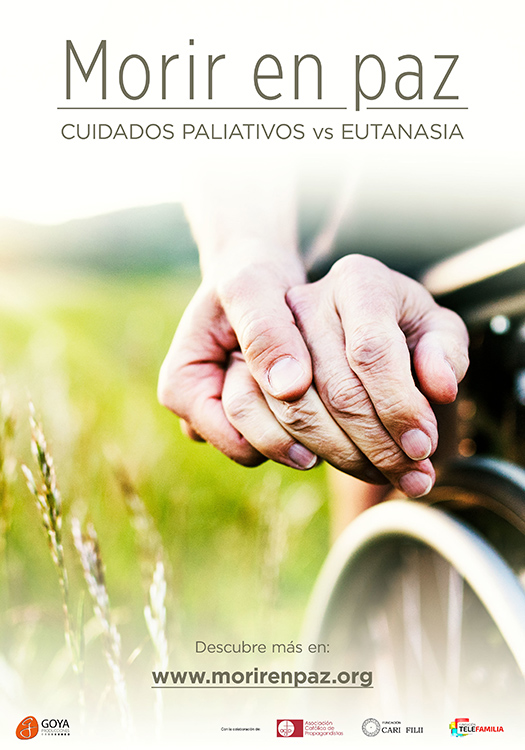





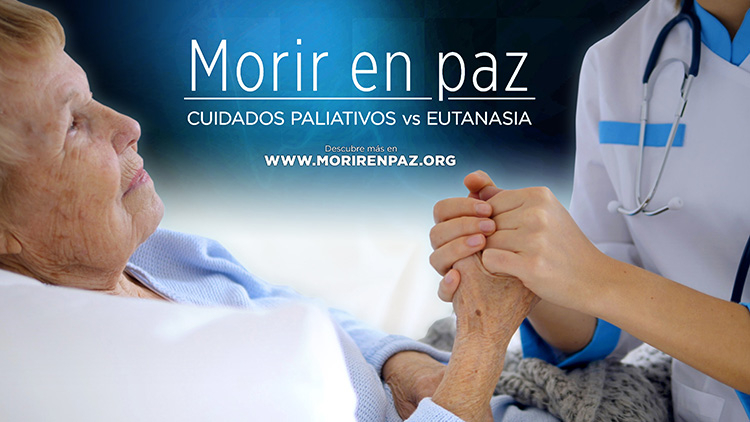





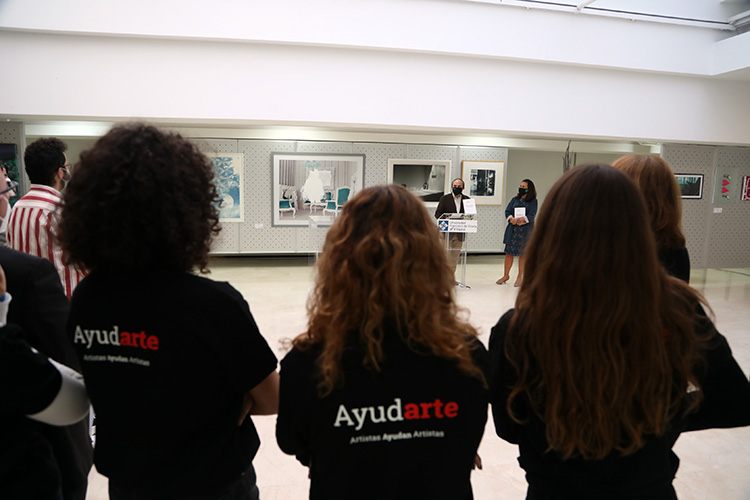

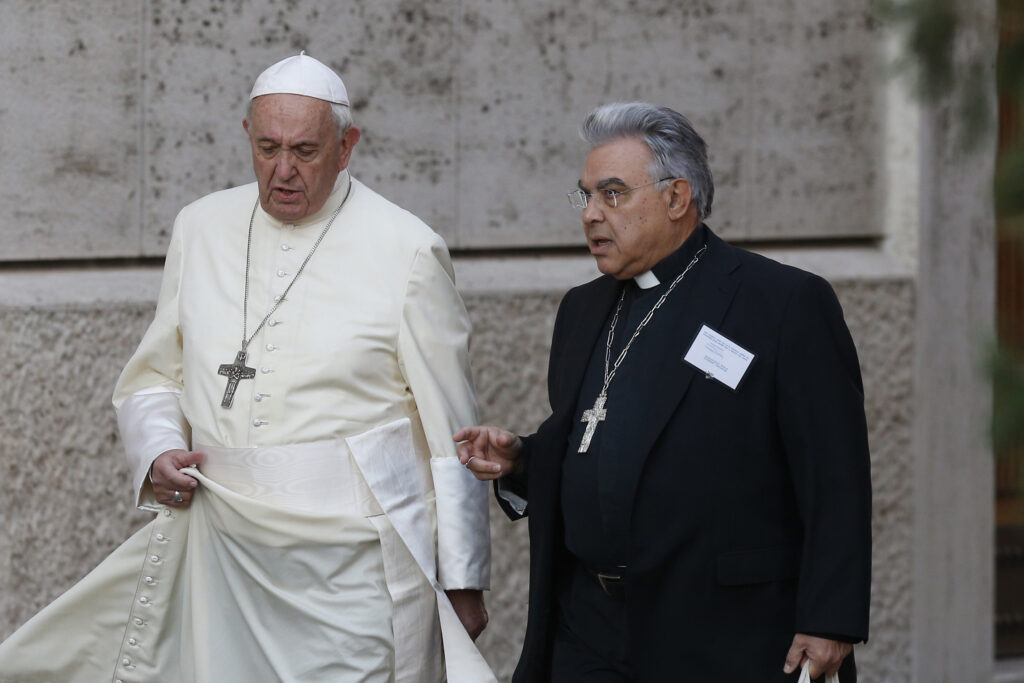
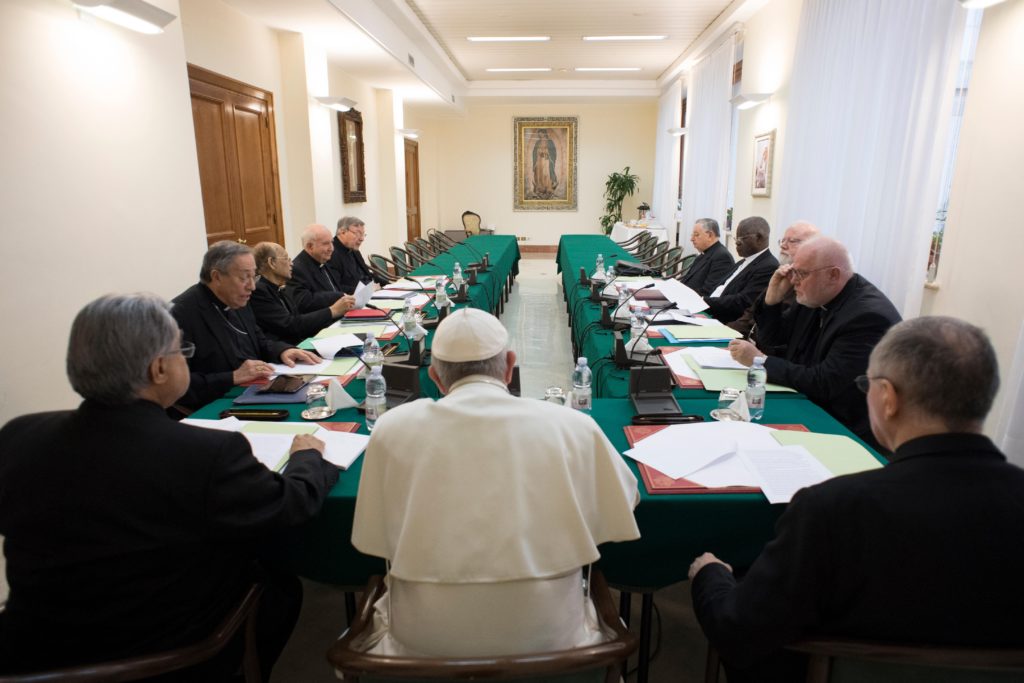
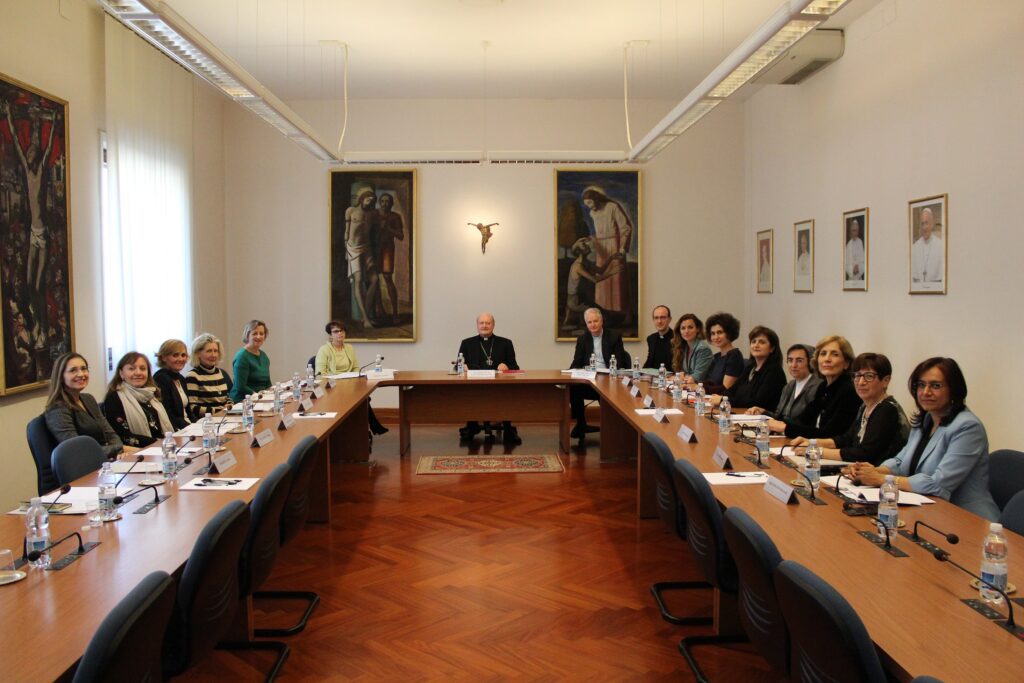
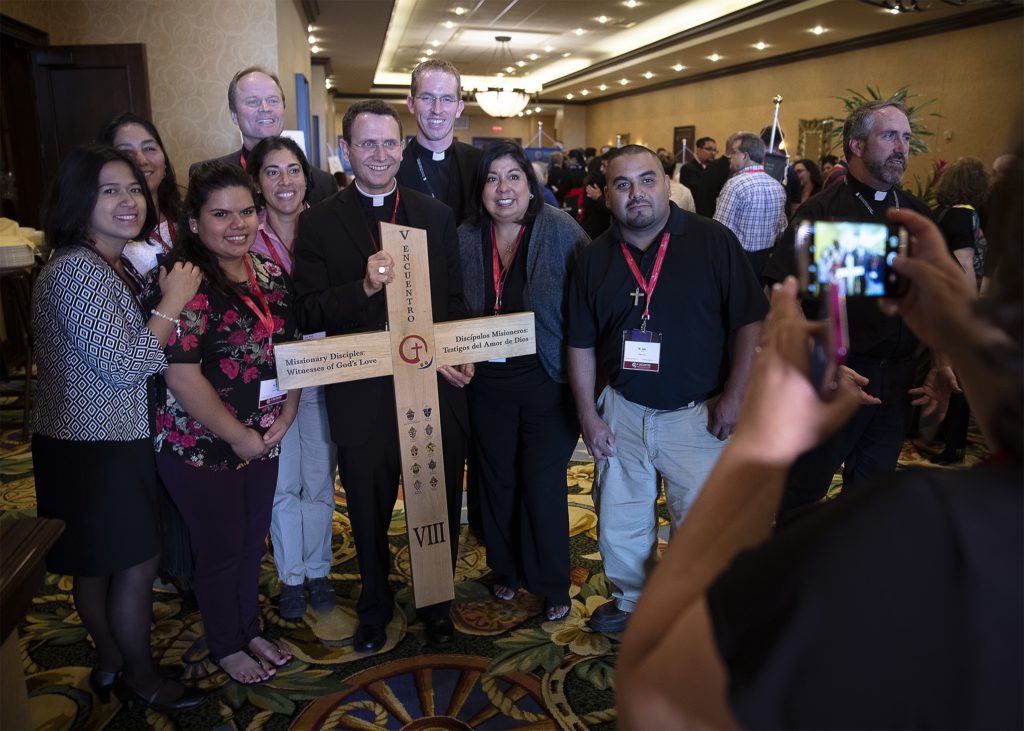
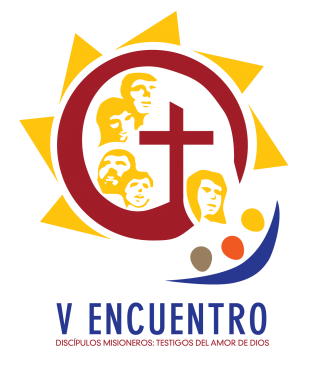
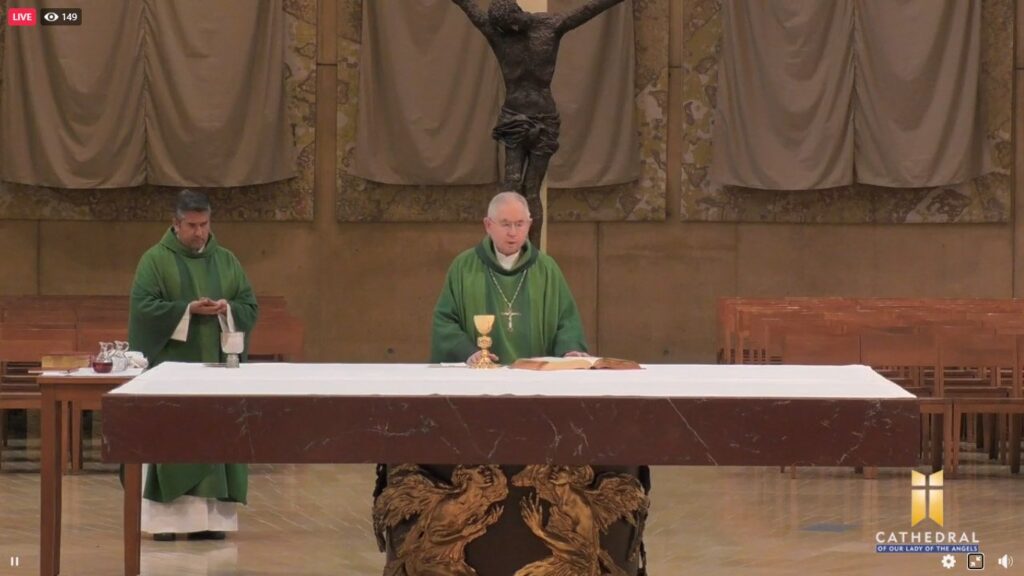
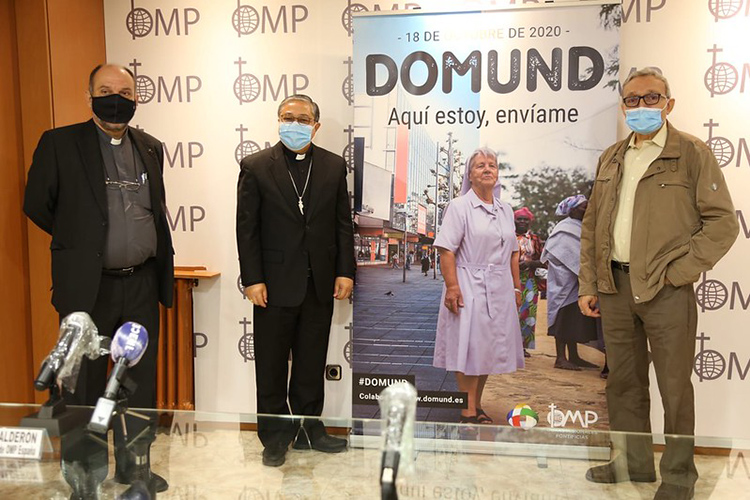
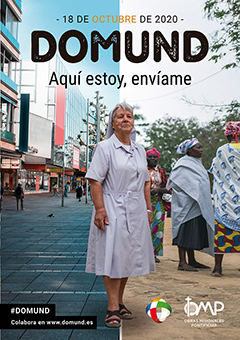
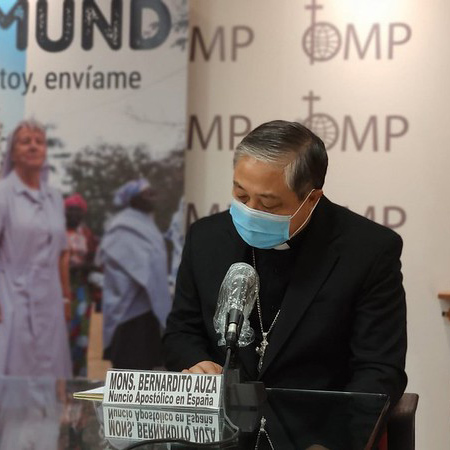
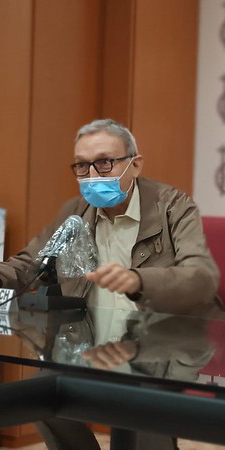

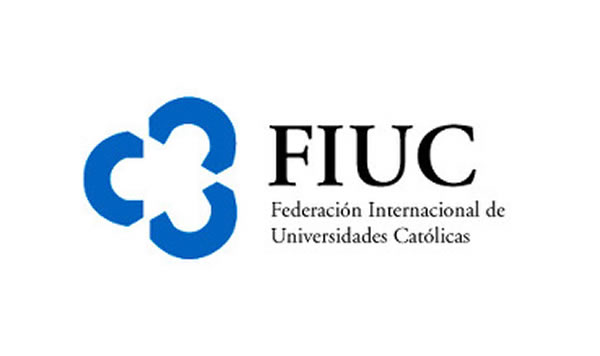


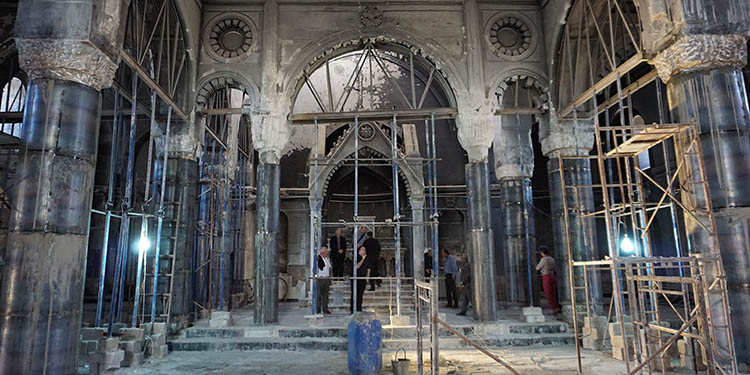
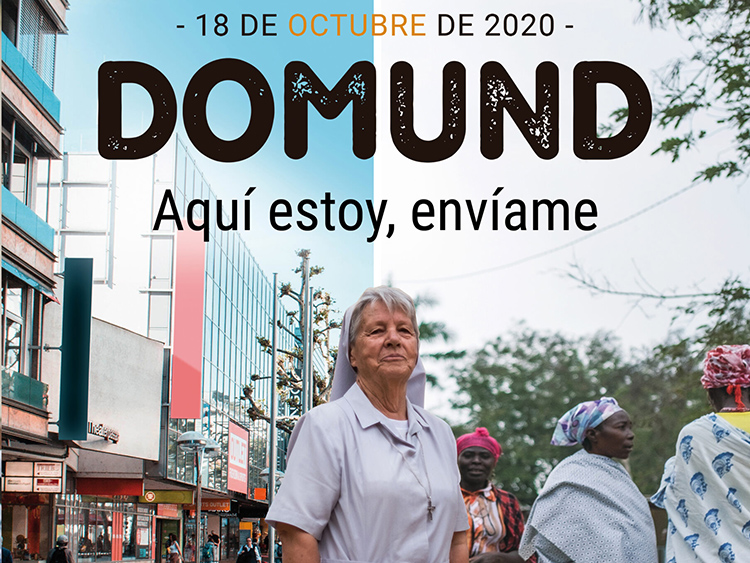
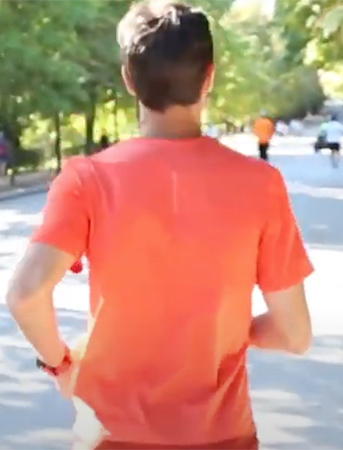
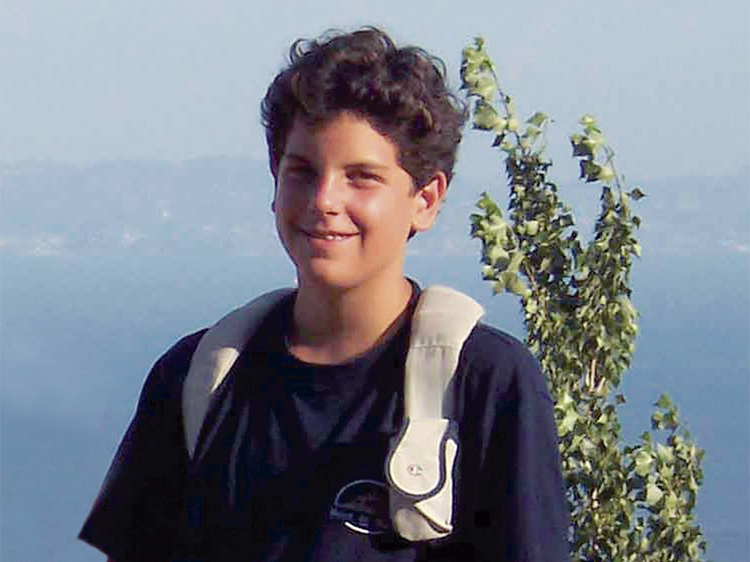
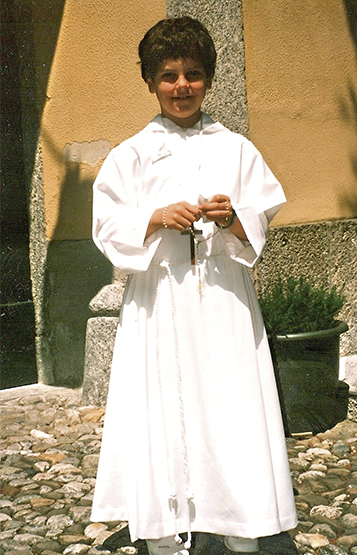


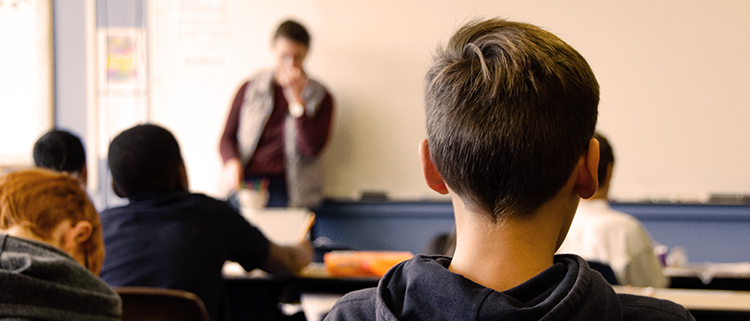
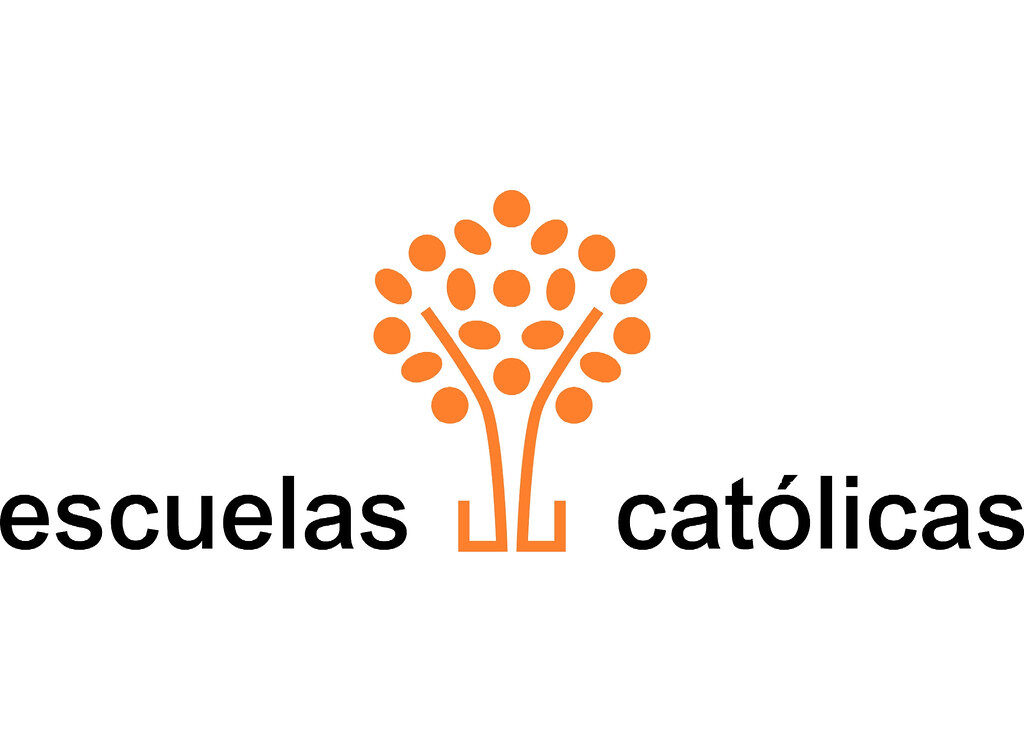
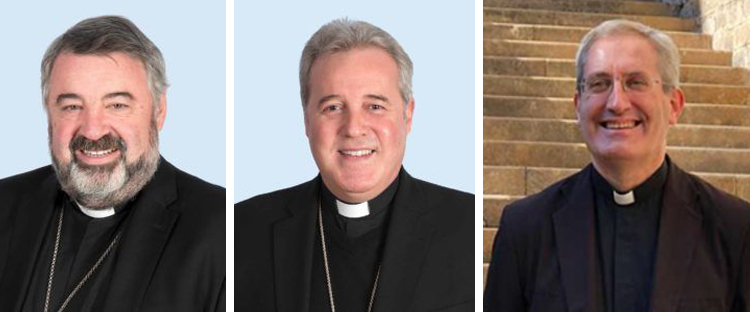
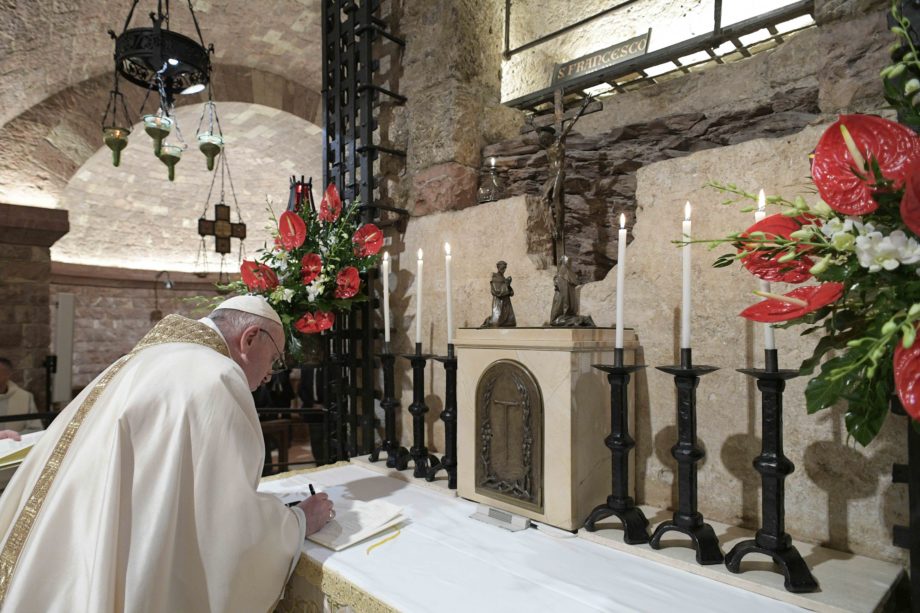
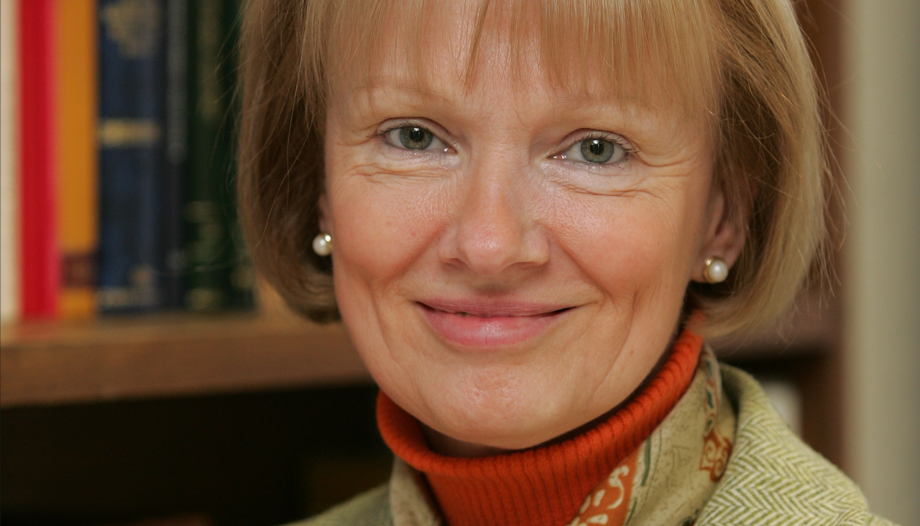

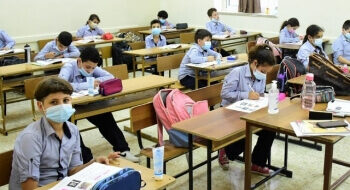
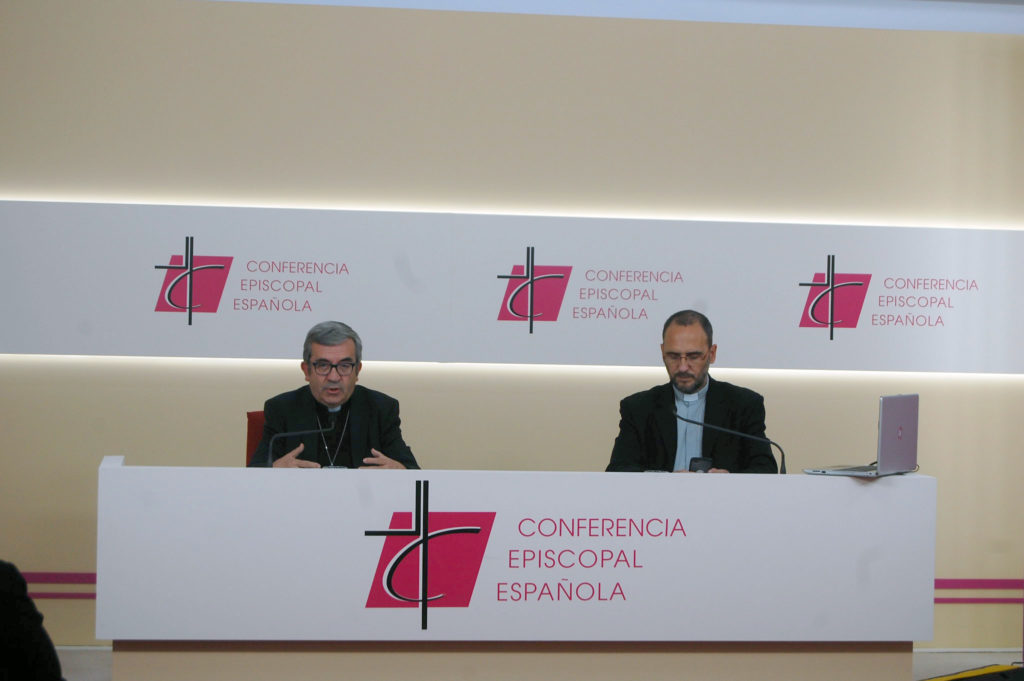

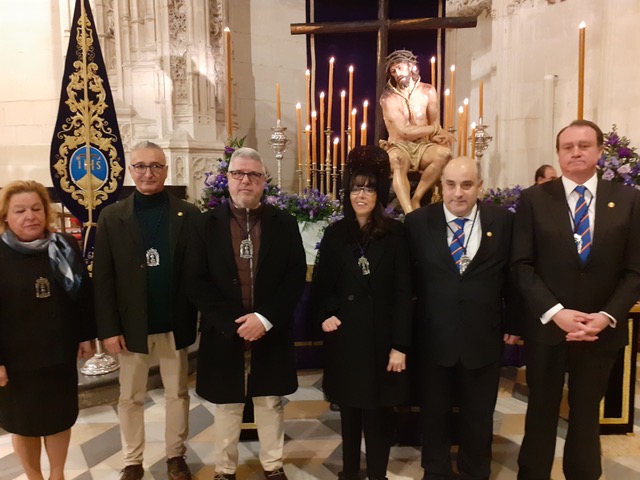
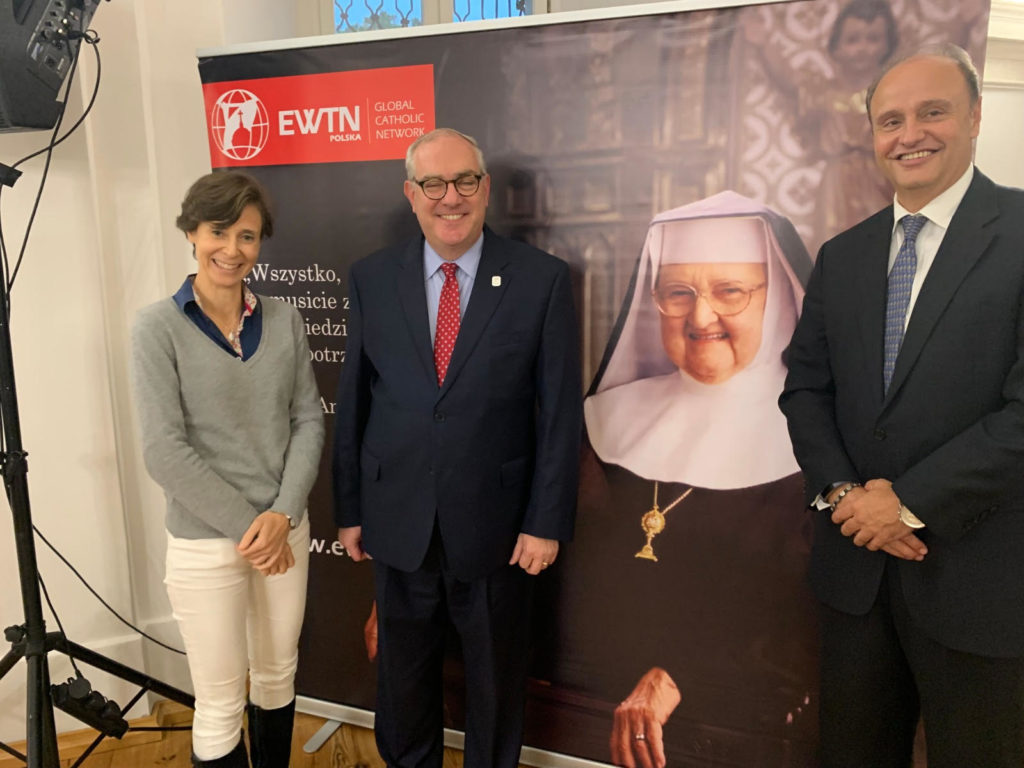
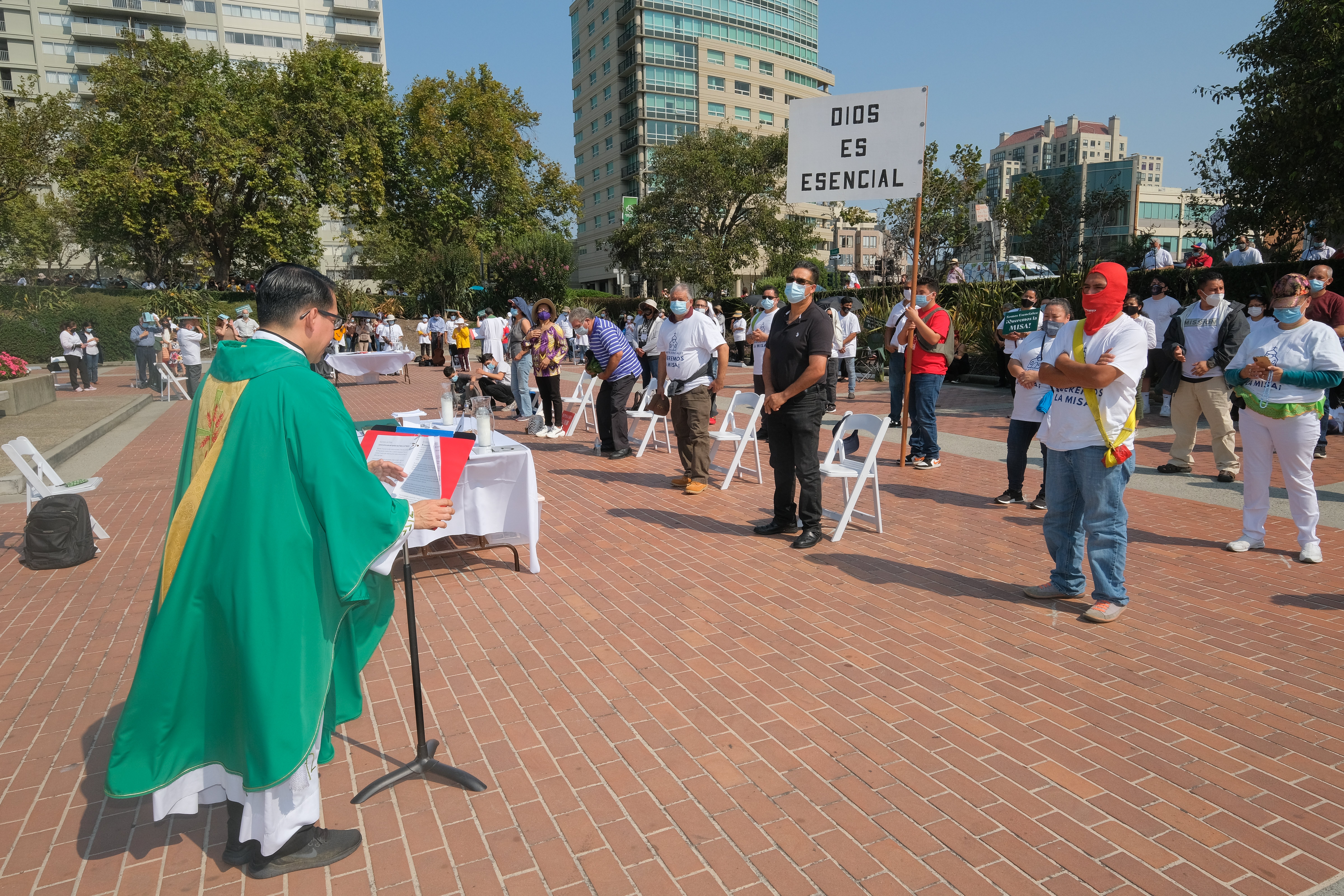
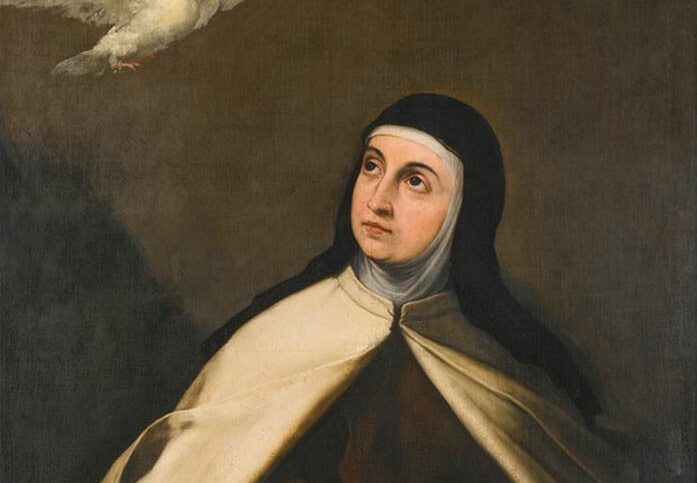
 "The Ecstasy of St. Theresa" is shown in all its splendor.
"The Ecstasy of St. Theresa" is shown in all its splendor.